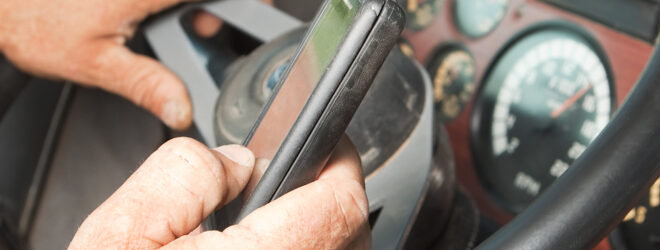Whether you drive a limousine, a party bus, or another type of vehicle, your job is to deliver passengers safely to their destination. While the full focus of a driver should be on driving, distractions like loud music and lively passengers can cause dangerous road situations. To ensure that customers enjoy a smooth ride, it’s important for drivers to manage distracting situations swiftly and safely.
You can reduce your risks by managing distracted driving, with the help of these recommendations:
1. Education
It’s important to educate drivers on the increasing trend of incidents caused by distracted driving and how it can endanger their lives, as well as the lives of passengers. Statistics don’t lie; even being distracted for a couple of seconds greatly increases the risk of an incident occurring.
2. Training programs
Provide a collision prevention training program incorporating scenarios of passenger distractions that may occur on the job. Training can include:
- How to identify potentially unruly passengers
- Procedures to manage distracting passengers
- How to enforce the rules of the vehicle assertively and professionally
3. Passenger policies
Thoroughly define what the consequences are for not following rules to ensure that passengers acknowledge them when signing the service contract. The driver can further inform passengers of the rules prior to boarding, and remind them that they are responsible for their actions, which could pose a risk to their own safety. The driver may want to give a warning to passengers that are starting to become uncontrollable.
4. Zero tolerance for substance abuse
Belligerent behaviour and unruliness cannot be tolerated. Be strict with the alcohol policy that has been set by the organization, as well as laws pertaining to alcohol consumption. Finally, ensure passengers know there is absolutely no tolerance for smoking or use of illegal drugs inside the vehicle.
5. Judgment
The driver’s primary responsibility is to safely transport everyone in the vehicle. If there’s any disruption that may cause distraction or harm, the driver can always pull over in a safe location until the distraction is settled. If a passenger is becoming aggressive and the driver feels threatened, call the authorities to help settle the dispute.
The importance of managing communication with drivers
Communication with the driver, while in transit, is a major issue in the passenger industry. Follow your provincial legislation on not using handheld, electronic devices (such as cell phones, tablets, and laptops) while driving, as your focus should be on the road rather than viewing display screens.
As part of your training and internal policies, inform drivers that they are not to use a handheld device with or without passengers in the vehicle. A simple policy statement can be included in their driver package and stored as part of the driver’s file.
In some cases, dispatch or fleet managers may need to get in touch with a driver immediately. But the driver should not break the law and place passengers in danger to answer a call. All communication needs to be safe while still meeting business needs.
You can avoid this communication dilemma with some careful preparation:
Frequent check-in times (where possible)
The driver and dispatch should communicate regularly for any updates or changes. Check-in times can vary depending on the driver’s drop-off and pick-up schedule. While this may not always be an option for limousine drivers, a policy could be established requiring drivers to check-in upon arrival at a destination, as well as after drop-off. This provides some opportunities for the driver and dispatch to communicate important information.
If dispatch needs to speak to the driver directly, a policy could be established where a call is placed to the driver with no voicemail delivered. If dispatch calls back immediately, this should be a notification to the driver that they need to speak as soon as possible. Always be honest with the passenger and let them know that you need to reach dispatch.
Hands-free technology
Bluetooth features in-vehicle or headsets can be an effective way for a driver to communicate with dispatch. Using hands-free technology allows the driver to quickly communicate with dispatch and receive any updated information with minimal disruption to any passengers.
Telematics
Another solution for passenger fleets to explore is the use of telematics or GPS software. Telematics is essentially the means of sending, receiving, and storing information relating to vehicles through telecommunications devices. Telematics can give you real time updates on your drivers’ status and location, which could eliminate the need to speak to the driver over the phone.
Ensure that you’re protected
Despite your best efforts, sometimes things can still go wrong. That’s when insurance can be helpful. To learn more about how a tailored policy can help protect you, your employees, and your bottom line, visit our Passenger Transport Services Insurance page today!



